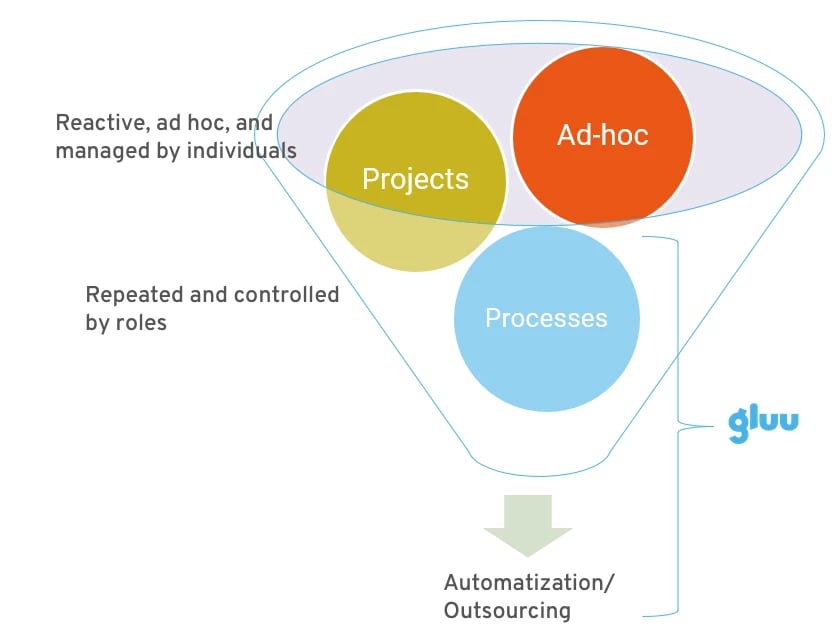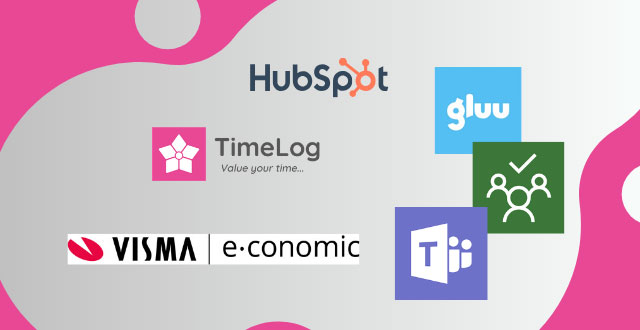Does optimisation really increase your bottom line?
6 min read
Time tracking
Build your perfect data foundation for spotless invoicing and deep business insights with easy time tracking.
Project management
Be a world champion project manager. Keep your projects on track - and profitable.
Resource management
Efficiently staff projects and run a predictable business with confidence.
Insights & Reporting
Get smarter - faster - to make clever decisions for long-term growth impact.
Project accounting & Invoicing
Invoice everything - fast and accurate - while staying on top of project finances.
Staff & Salary
Give accountants and HR an intelligent tool to eliminate draining administration.
Financial Systems
TimeLog offers standard integrations for all your favourite financial systems. Save time and reduce manual tasks.
Payroll Solutions
TimeLog offers standard integrations for multiple payroll solutions. Get easy salary administration and only enter payroll information once.
Add-ons
Track time automatically via Outlook, use gamification or find another add-on that can support your business.
Multiple Legal Entities
You can create synergy between your departments and across borders and offices with the Multiple Legal Entities module from TimeLog.
Business Intelligence
Utilise the insights you get from TimeLog to the fullest. Our system is ready to integrate with multiple BI solutions.
Partner Integrations
TimeLog PSA is part of a large ecosystem. Get an overview of all the partner integrations in the TimeLog family.
Economy department
Save 1-2 days a month on your invoicing process.
Project teams
From planning to execution and evaluation. Robust tools for every project manager.
Management teams
Create a performance-driven culture with solid reporting capabilities.
Large enterprises
Enhance operations and performance across entities, countries and departments.
NGOs and non-profit organisations
Simplify internal processes, spend less time on administration, and get documentation in place - at a discounted rate.
Blog
Get inspired to run an even better business with articles, guides and analyses.
Guides, podcasts and webinars
Get access to templates, guides and webinars that help and inspire you.
Help Center
Looking for help material and user guides to the TimeLog system? Look no further. Find all the help you need now.
Get a single source of truth
Discover how companies maintain a single source of truth across borders, departments, and currencies.
Get integrated
Discover the advantages customers gain from utilising our integrations and API.
Reporting in real-time
Explore how others leverage reporting to optimise their processes and make informed decisions.
Get started with resource planning
Discover how other companies thoroughly grasp their resources and enhance their ability to predict future trends.
Improved project financials
This is how the efficient financial toolbox from TimeLog helps project managers and CFOs improve their project financials.
Faster invoicing
Discover how other companies have slashed the time spent on invoicing by 75% - and uncover how you can achieve the same efficiency.
The Story of TimeLog
Get insights on TimeLog and how we can help you grow and evolve your business.
Employees
See who shows up every day to deliver the best PSA solution.
Career
What's life like at TimeLog? Are we hiring? Get the answer here.
Partner
Create even more value for your customers, as well as ours, as a TimeLog Partner.
Premium Service
Online Help Center, tailored onboarding and support from Day 1.
Corporate Social Responsibility
We work to ensure a positive impact on planet, people and businesses.
Security and GDPR
Learn more about how we work to keep your data safe and provide maximum security.
5 min read
A new study shows that companies with mature processes are more than six times more profitable than companies without. So your work is cut out for you! The question is how?

You probably know that a business process is a chain of activities that are repeated. You, as others, may see visions of documentation and bureaucracy that gets in the way of employees rather than helping them.
Unfortunately, this is the reality in many places. But this article will show you that it doesn’t need to be that way.
Over seven years, Gluu has helped a considerable number of companies all over the world to succeed with business processes. In this article, you’ll get our very condensed recipe for getting processes well integrated into your business.
First, we need to talk about where the processes are, and which activities are appropriately treated as processes. Next, I want to share where we typically see things go wrong. Finally, I will give you the seven steps that have worked for a lot of people, and which will get you off to a good start.
There are many opinions about this. We follow the current international consensus and view a business process as…
A chain of documented activities that are repeated by various employees.
Many confuse projects and processes. After all, a project is a chain of activities performed by various people as well.
So, what’s the difference?
According to Project Management Institute, a project is “a unique work activity to produce a unique output.” Meaning, it is something that happens once.
In other words, we treat many tasks as projects, when we might be better of seeing them as processes. This is the key to success: Are most work activities completely unique (projects), or are they something that is repeated, where we can learn from each time we do it (processes)?
By viewing repeated activities as one-time activities, we miss out on the opportunity to learn and repeat the activity each time we do it.
As said by one of the fathers of the huge increase in industrial productivity over the past 50-60 years:
If you can't describe what you are doing as a process, then you don't know what you're doing.
Which means that “I have the processes in my mind” doesn’t hold water.
Those minds belong to people who go home every night. So, what is left in the business?
Roughly, you can divide the work in your company into the following chunks:

Like a “sales funnel” the work activities in your “work funnel” should flow through this funnel. The greater the share of ad hoc work and projects that are not anchored, the less productive is the company in question.
You find the processes by looking at the work tasks from this perspective and asking yourselves:
Here, you will always want to start with those activities that cause the most problems and take the most time. This could be anything from IT security to onboarding new customers.
Once the activities are divided up and you have identified the important processes, you will start the real work – first to describe how they are done today, and then ensuring that this is actually how it takes place in reality.
This is when you need to choose a road that leads to good conversations, a-ha moments, and improvements. In order for this to happen, you need to avoid the typical errors.
Small and medium-sized companies (from 50-500 employees) often make the following mistakes when working with processes:
Now, you are probably thinking that your company should consider way more activities to be processes, and that this might be the way to a better bottom line. You have also seen the mistakes of others, and you think you can avoid making the same ones .
You can do everything using Visio, Word, and e-mail for a few processes, but in reality it is almost impossible to keep any larger number of processes, work instructions, tasks and roles, and employees updated and relevant. Consider the fact that you may have hundreds of processes that need to be updated regularly by the right person. This must then be communicated to the exact right employee. The employees must also perform certain tasks at the right time, and they must be registered correctly. On this basis, we developed the Gluu platform to eliminate friction in working with processes. In Gluu, the employees themselves can understand, carry out, and improve every process – with proper control and management at a higher level.
This is why a process platform is the first step on the road to powerful processes:
These seven steps are linked to chapters in our suggestion for a process improvement plan, which you can feel free to copy, modify, and use for your own initiative.
Many are too busy putting out fires and working ad hoc to look at “root causes” for why they work the way they do. They realize that they should “take charge of the processes” at some point, but the time to do it is never right now. So, isn’t this just a theoretical exercise for those who have time?
No. You reap the fruits in form of faster onboarding, less risk when key employees leave, more time for development (due to less ad hoc work), fewer errors, and better compliance with requirements for personal data, security, and the environment.
The sooner you get started, the sooner you will benefit.

62 min read
 Read more
Read more
 Read more
Read more
 Read more
Read more
 Read more
Read more
 Read more
Read more